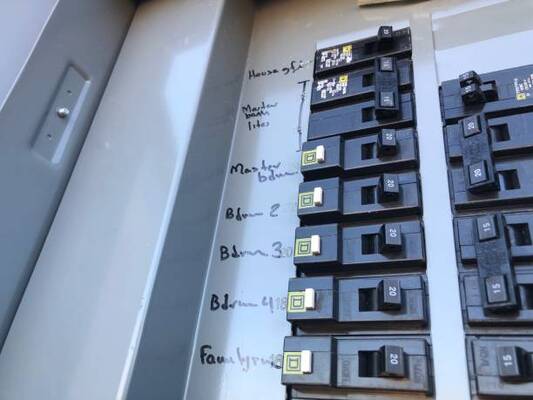- 1-905-452-8193
- Contact Us
- Member Login
- Get Listed Today
- 220,911 members

Your home electrical panel, also known as your breaker box, is the nerve centre of your home's electrical system. It's where all of the wiring in your home comes together and where you can safely shut off power to specific areas of your home if necessary. This is usually the first thing that your electrician Central Coast looks for when there is an issue with your power.
Your electrical panel is typically located in a central location in your home, such as a utility room or garage. The main breaker at the top of the panel controls all of the electricity coming into your home and should always be in the "off" position unless you are working on something that requires power.
Each circuit in your home is protected by its breaker, which can be turned on or off as needed. If there is ever an overload on a particular circuit, the breaker will "trip" and shut off the electricity to that circuit to prevent a fire.
Knowing what your electrical panel does and how it works is important for both safety and convenience. If you ever have any questions, be sure to consult with a qualified electrician.
Your electrical panel is one of the most important parts of your home—it's what keeps the electricity flowing to all of your appliances and lights. But what exactly is an electrical panel, and what are the different parts that make it up?
Let us take a closer look at some of the important elements of your home electrical panel that you need to know about.
1. The main breaker is the large switch at the top of the electrical panel. This breaker controls all of the electricity flowing to your home. If there is an electrical problem, you can shut off the power to your entire home by flipping this switch.
2. The circuit breakers are the smaller switches below the main breaker. These switches control the electricity flowing to specific areas of your home. If there is an electrical problem in one area of your home, you can shut off the power to that area by flipping the corresponding circuit breaker.
3. The ground wire is attached to the electrical panel and helps to protect your home from electrical shocks.
4. The neutral wire is also attached to the electrical panel and helps to distribute electricity evenly throughout your home.
5. The hot wires are responsible for carrying electricity from the main breaker to the circuit breakers. These wires can become overloaded if too much electricity is flowing through them. If an overload occurs, the circuit breaker will trip and shut off the flow of electricity.
6. The load centre is where all of the wiring for your home's electrical system comes together. This is typically located in the garage or basement.
7. The service entrance is the point where electricity enters your home from the utility company.
8. The meter box is where your home's electrical usage is measured.
9. The grounding rod is a metal rod that is driven into the ground near your home. This rod helps to protect your home from lightning strikes.
10. The conduit is a type of tubing that is used to protect wiring as it runs through your home.
11. The junction box is a box that contains all of the connections between the different wires in your home's electrical system.
12. The switchboard is the main control panel for your home's electrical system. This panel typically contains the main breaker, circuit breakers, and other important components.
An electrical panel is a vital part of your home, and it's important to understand how it works. By familiarizing yourself with the different parts of your electrical panel, you'll be better prepared to handle any problems that may arise.
If you have questions or you need more information about the content on this topic, please get in touch with a licensed electrician to get professional advice. Do not work on electrical issues by yourself. Leave it to the experts who have the tools and experience to get the job done properly.
